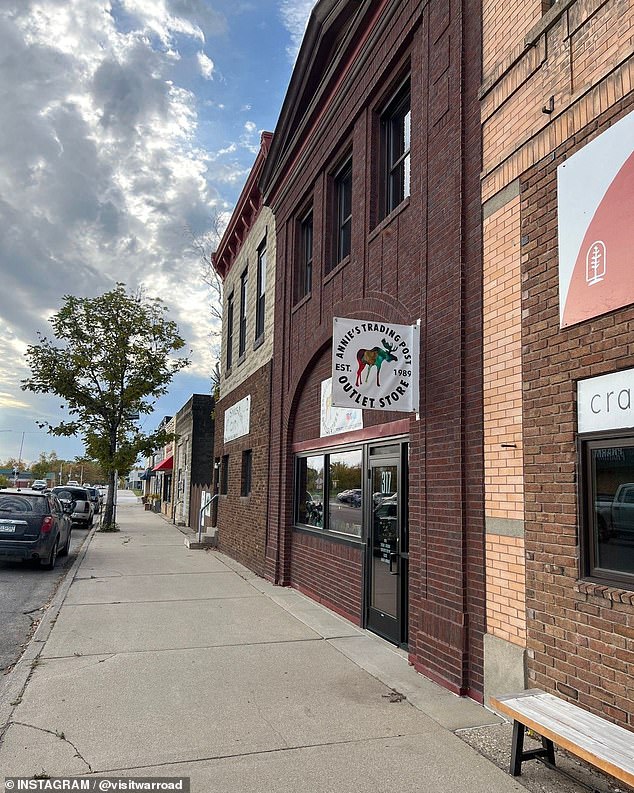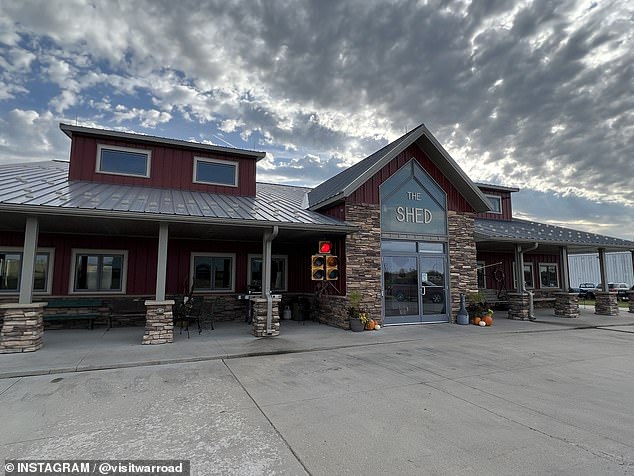Inside a remote small town and its $1.5 billion big factory as they both fight for survival – and it is a battle being played out across the US
A remote town and its massive $1.5 billion factory are fighting for survival – and it’s a battle that’s being fought nationwide.
Warroad, Minnesota, a town of just 2,000 near the Canadian border, is known for its prized walleye fishing, hockey legacy and the sprawling yellow complex home to Marvin, a $1.5 billion window and door manufacturer.
Warroad is a typical American town, but it faces contemporary challenges.
Founded over a century ago, Marvin has weathered economic downturns and catastrophic fires that destroyed factories, but has survived each time.
Today, however, the challenge is different as the city faces a shrinking workforce.
A remote town and its massive $1.5 billion factory are fighting for survival – and it’s a battle that’s being fought nationwide

Founded over a century ago, Marvin has weathered economic setbacks and catastrophic fires that destroyed its factories, but has survived each time.
With more baby boomers retiring from the ranks than new recruits, Marvin is faced with dozens of unfilled positions that are critical to his companies.
“The company, the family, we always support whatever is good for the city,” CEO Paul Marvin told the newspaper. Wall Street Journal. “If we really want to be more profitable, there are better cities than this.”
Marvin, 49, has initiated “The Path North,” a bold recruitment campaign focused on far-flung shores like Puerto Rico and Florida, where economic disparities have created a pool of potential talent longing for stability.
But the road to the remote outpost in the icy north is not easy.
Sam Borja of Integrated Staffing Solutions assisted with recruitment and highlighted the drastic adjustments newcomers face when moving from warmer climates.
“Warroad is by far the most geographically isolated place we’ve worked with,” Borja told the WSJ. ‘It’s not for everyone.’

Today, however, the challenge is different as the city faces a shrinking workforce

With more baby boomers retiring from the ranks than new recruits, Marvin is faced with dozens of unfilled positions that are crucial to his businesses.
Retaining recruits poses another challenge and reflects a broader trend in U.S. manufacturing, where skilled labor is scarce and many workers are often reluctant to pursue factory careers.
But many, like Alan Rodriguez, a West Palm Beach transplant, find stability and joy in the move to Warroad.
Rodriguez emphasized the safety and respect he has for Warroad, comparing it to the economic hardship and crime he faced in Florida.
“I feel the American dream here,” said Rodriguez, who moved to Warroad in October.
“The other day I went to an ATM to get cash,” he told the outlet. “I walked to my car with cash in my hand and said, hey, you can’t do this in Florida. Someone would come and steal it.” In Warroad, he said, “the deer on the highway are the most dangerous.”
He stressed that he is now proud and has respect for his work.
“Florida felt like Cuba, without the dictator,” he said. “You’re wearing something that says Marvin: You’re a god.”
But Warroad’s appeal also struggles to resonate with younger generations.

Retaining recruits poses another challenge and reflects a broader trend in U.S. manufacturing, where skilled labor is scarce and many workers are often reluctant to pursue factory careers.
High school graduates go to distant universities and return mainly to start a family or find white-collar jobs.
The city’s mayor, Bob Marvin, said high school students “can’t wait to get out of town.”
Companies across the country are in similar positions, struggling to fill manufacturing and construction jobs.
The challenge is due to a shortage of skilled workers, the retirement of baby boomers and the freedom of choice of younger generations to enter these fields.
The Manufacturing Institute has warned that more than two million manufacturing jobs could remain vacant by 2030 if current trends continue.
In January, the U.S. added 23,000 manufacturing jobs, but in December there were 601,000 open positions — a three-month high, according to the Bureau of Labor Statistics.
